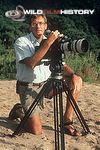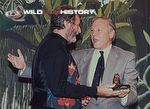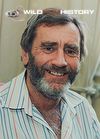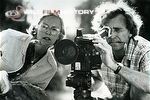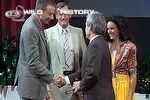Alan Root

World renowned wildlife filmmaker Alan Root was born in London but moved to Kenya at a young age. Leaving school at 16, Alan tried his hand at numerous pursuits, learning to trap, guide and fly while launching many expeditions into the surrounding bush. Once in possession of a camera, he began to film native species and, with his natural talent obvious, he came to the attention of a visiting filmmaker, John Pearson, who hired him on the spot.
Footage from his first project, filming lily-trotters on Lake Naivasha, impressed visiting filmmakers, Armand and Michaela Denis, and Alan quickly began working for the couple, filming animals of the Serengeti for their BBC series, On Safari. 1956 saw him collaborating with the father and son team Bernhard and Michael Grzimek, on their Oscar winning film Serengeti Shall Not Die (1959), with Alan completing filming on his own after Michael’s tragic death.
Alan married animal enthusiast Joan Thorpe in 1961 and the couple created a formidable filmmaking partnership, releasing an array of award-winning wildlife films over the next twenty years. Their first international success came in 1973 with Baobab: Portrait of a Tree and in 1975 they completed the first balloon ascent over Mount Kilimanjaro for their epic aerial film, Balloon Safari.
Famous for their innovative cinematography techniques, the couple captured the pounding energy of a thundering wildebeest herd in their 1974 production, The Year of the Wildebeest, by placing cameras at ground level and protecting them with tortoise shells.
Mysterious Castles of Clay in 1978 earned the pair an Oscar nomination and the same year a behind-the-scenes Survival Special, Two in the Bush, brought their legendary risk-taking to light. Alan has had numerous close-calls over his career and is littered with scars to prove it - having suffered hippo bites and losing a finger to a death adder.
Alan and Joan separated in the 1980s and Alan went on to complete projects for various corporations including Survival, National Geographic and the BBC. In 1987, he took budding wildlife filmmakers Mark Deeble and Victoria Stone under his wing. Inviting them to the Serengeti, he helped the couple photograph and produce the critically acclaimed film Here Be Dragons (1989), which broke ITV viewing records.
During his long career Alan has been honoured by over 60 awards and in 1994 received an Outstanding Achievement Award at the Wildscreen Festival.



